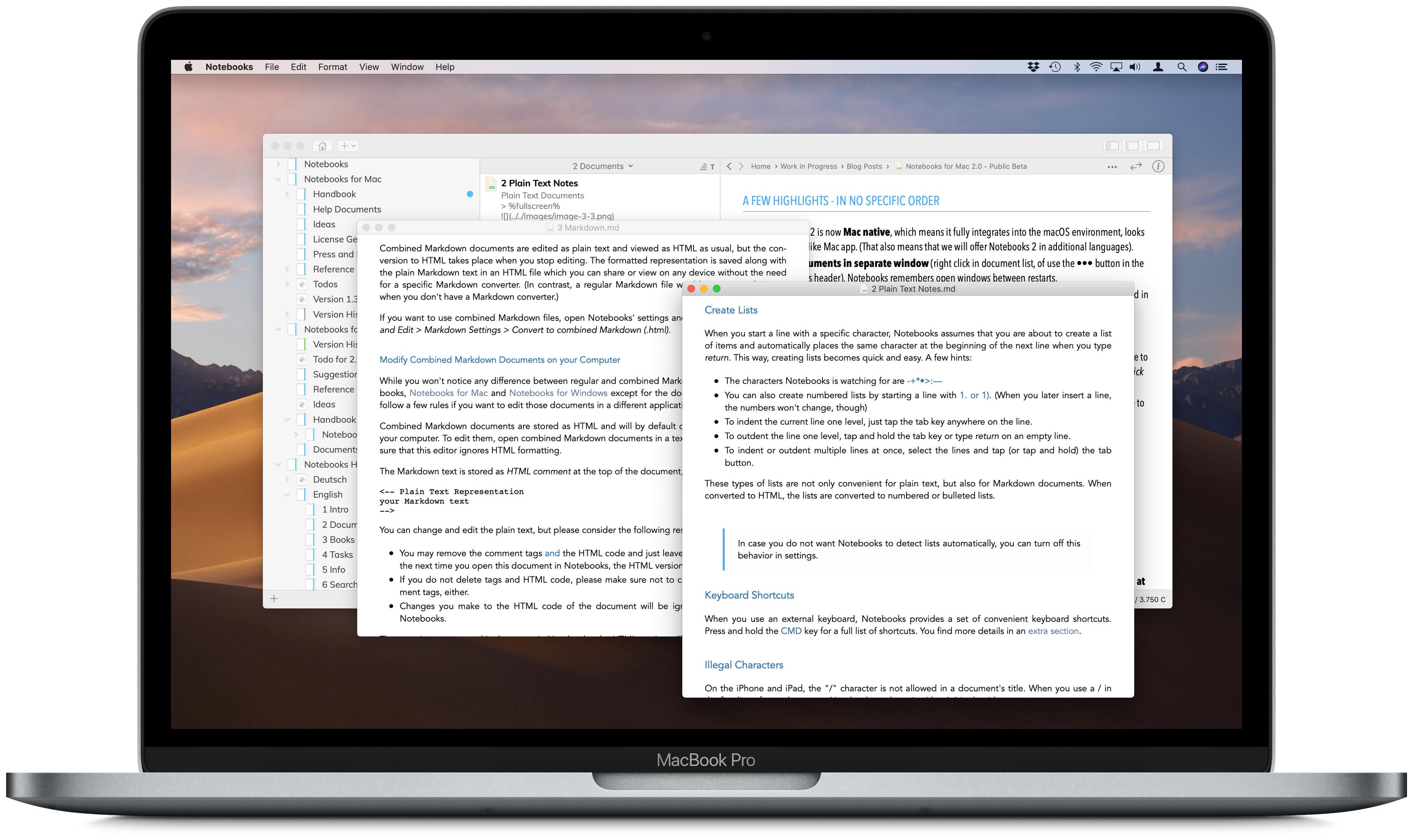Download the latest version of Notebook for Mac - Notes, synched across devices and the cloud. Read 8 user reviews of Notebook on MacUpdate. Free download NoteBook NoteBook for Mac OS X. 'NoteBook is an ingenious, all-in-one solution for anyone who needs to stay organized, whatever field they may be in" -Dmitri Sobol, COO SOLVE THE ONE PROBLEM THAT'S KEEPING YOU FROM GETTING.
Is your Mac up to date with the latest version of the Mac operating system? Is it using the version required by a product that you want to use with your Mac? Which versions are earlier (older) or later (newer, more recent)? To find out, learn which version is installed now.
If your macOS isn't up to date, you may be able to update to a later version.
Which macOS version is installed?
From the Apple menu in the corner of your screen, choose About This Mac. You should see the macOS name, such as macOS Big Sur, followed by its version number. If you need to know the build number as well, click the version number to see it.
Which macOS version is the latest?
These are all Mac operating systems, starting with the most recent. When a major new macOS is released, it gets a new name, such as macOS Big Sur. As updates that change the macOS version number become available, this article is updated to show the latest version of that macOS.
If your Mac is using an earlier version of any Mac operating system, you should install the latest Apple software updates, which can include important security updates and updates for the apps that are installed by macOS, such as Safari, Books, Messages, Mail, Music, Calendar, and Photos.
| macOS | Latest version |
|---|---|
| macOS Big Sur | 11.3 |
| macOS Catalina | 10.15.7 |
| macOS Mojave | 10.14.6 |
| macOS High Sierra | 10.13.6 |
| macOS Sierra | 10.12.6 |
| OS X El Capitan | 10.11.6 |
| OS X Yosemite | 10.10.5 |
| OS X Mavericks | 10.9.5 |
| OS X Mountain Lion | 10.8.5 |
| OS X Lion | 10.7.5 |
| Mac OS X Snow Leopard | 10.6.8 |
| Mac OS X Leopard | 10.5.8 |
| Mac OS X Tiger | 10.4.11 |
| Mac OS X Panther | 10.3.9 |
| Mac OS X Jaguar | 10.2.8 |
| Mac OS X Puma | 10.1.5 |
| Mac OS X Cheetah | 10.0.4 |
This is my preferred way to install Python and Jupyter notebook for doing scientific data analysis. There are many alternative ways of doing this that you can find on Google. I’m doing this on a MacBook Pro (Retina, 13-inch, Early 2015) with macOS High Sierra 10.13.3.
Notebook For Mac Download
In the past, I used virtualenv to manage virtual environments with Python 2. Python3 has built-in handling of virtual environments, so I use that here instead. If you need to use Python 2, then you’ll want to install virtualenv (see first link at the bottom).
Install Homebrew
All of these steps are done in the Mac OS Terminal, so start that first.
First install XCode:
Install Homebrew:
Open or create the file ~/.bash_profile and write:
Install Python 3
The Notebook Costume
As of 2018-4-9, this will install Python 3 (I think previously it installed Python 2):
Set up virtual environment
Best Notebook App For Mac
By default, Python 3 comes with the ability to create virtual environments.
Make a folder to host your virtual envs:
Create a virtual env for Jupyter:
Run virtual environment and Jupyter
Start the virtual env:
Install packages for scientific computing:

Run Jupyter:
A browser window will open with the Jupyter file browser in your current working directory.
Exit Jupyter and virtual environment
Jupyter notebook will run in your terminal window until you close it (with Ctrl-C).
You can close the virtual environment with:
UPDATE 2018-04-19: A very useful (and IMO essential) addition to Jupyter notebook is the Table of Contents extension. I show how I install this in a different blog post.
References
- The steps above are mostly based on Maria Mele’s “Install Python 2.7, virtualenv and virtualenvwrapper on OS X Mavericks/Yosemite”
- Documentation on Python 3 virtual environments
- Explanation of how Homebrew installs Python — i.e. why Python 3 isn’t linked to the command`python`, which motivated some of my deviations from the above blog post